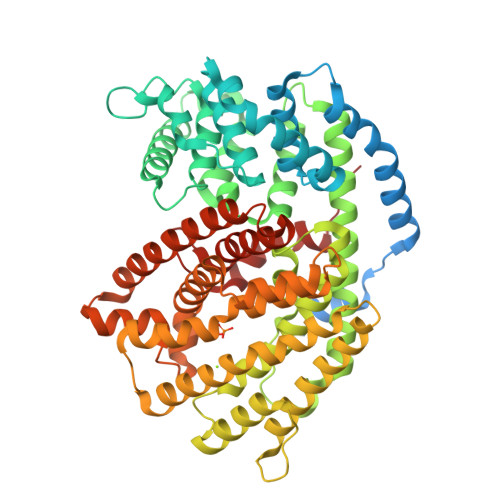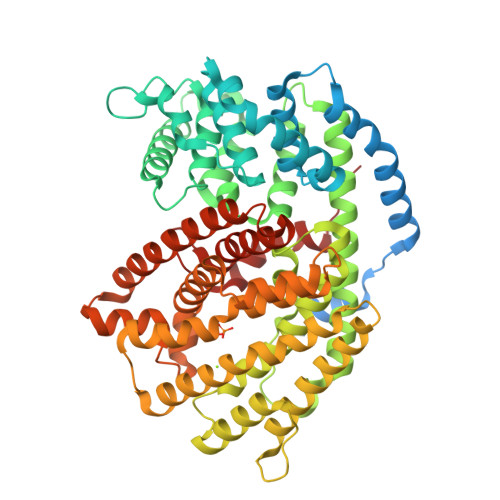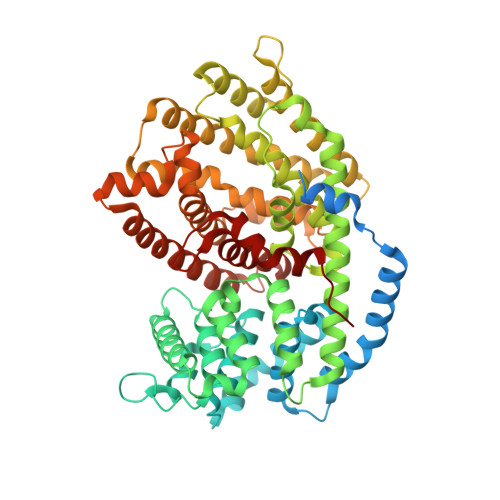Molecular Basis for Sesterterpene Diversity Produced by Plant Terpene Synthases.
Chen, Q., Li, J., Liu, Z., Mitsuhashi, T., Zhang, Y., Liu, H., Ma, Y., He, J., Shinada, T., Sato, T., Wang, Y., Liu, H., Abe, I., Zhang, P., Wang, G.(2020) Plant Commun 1: 100051-100051
- PubMed: 33367256
- DOI: https://doi.org/10.1016/j.xplc.2020.100051
- Primary Citation of Related Structures:
7BZB, 7BZC - PubMed Abstract:
Class I terpene synthase (TPS) generates bioactive terpenoids with diverse backbones. Sesterterpene synthase (sester-TPS, C25), a branch of class I TPSs, was recently identified in Brassicaceae. However, the catalytic mechanisms of sester-TPSs are not fully understood. Here, we first identified three nonclustered functional sester-TPSs (AtTPS06, AtTPS22, and AtTPS29) in Arabidopsis thaliana . AtTPS06 utilizes a type-B cyclization mechanism, whereas most other sester-TPSs produce various sesterterpene backbones via a type-A cyclization mechanism. We then determined the crystal structure of the AtTPS18-FSPP complex to explore the cyclization mechanism of plant sester-TPSs. We used structural comparisons and site-directed mutagenesis to further elucidate the mechanism: (1) mainly due to the outward shift of helix G, plant sester-TPSs have a larger catalytic pocket than do mono-, sesqui-, and di-TPSs to accommodate GFPP; (2) type-A sester-TPSs have more aromatic residues (five or six) in their catalytic pocket than classic TPSs (two or three), which also determines whether the type-A or type-B cyclization mechanism is active; and (3) the other residues responsible for product fidelity are determined by interconversion of AtTPS18 and its close homologs. Altogether, this study improves our understanding of the catalytic mechanism of plant sester-TPS, which ultimately enables the rational engineering of sesterterpenoids for future applications.
Organizational Affiliation:
State Key Laboratory of Plant Genomics and National Center for Plant Gene Research, Institute of Genetics and Developmental Biology, The Innovative Academy of Seed Design, Chinese Academy of Sciences, Beijing 100101, China.




















